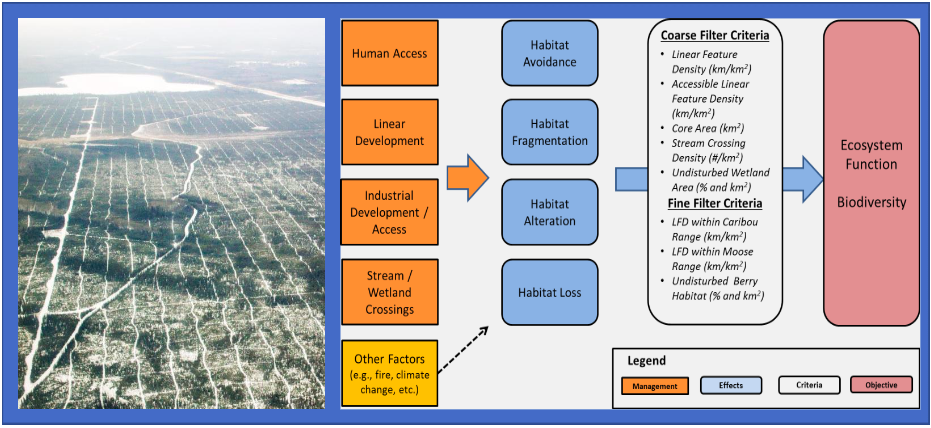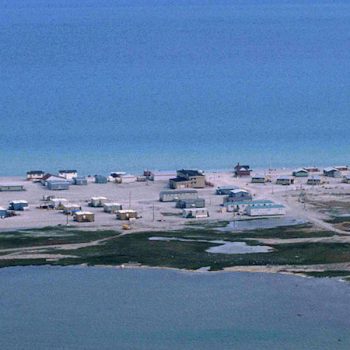
Project Description
Linear Disturbance and Access Management Plan
The cumulative effects of development create enormous pressure on wildlife and ecosystem health in northern Alberta. Competing management objectives are related to economic development, caribou conservation, recreational access and traditional use. In response to terrestrial ecosystem modeling that identified linear disturbance as a key stressor, the Government of Alberta initiated a process to develop a coordinated linear footprint management plan in a study area south of Fort MacMurray.
Compass was contracted by the Cumulative Environmental Management Association (CEMA) to design and facilitate a multi-stakeholder planning process. Using a Structured Decision Making approach, we worked with CEMA’s multi-stakeholder committee to develop objectives and evaluation criteria, structure management actions and strategies and conduct a spatial and temporal cumulative effects evaluation to direct long-term land use planning recommendations for the area.
This process produced linear footprint and access management recommendations that were acceptable to a broad cross-section of affected stakeholders. It informed the design and implementation of future multi-stakeholder sub-regional planning processes undertaken as part of implementing the Lower Athabasca Regional Plan (LARP).

Related Projects: Species at Risk, Fish and Wildlife, Climate, Forests and Lands, Cumulative Effects, Indigenous Groups, Structured Decision Making, Stakeholder Facilitation, Technical Working Groups, Multi-Attribute Trade-off Analysis
Project Details
- ClientCumulative Environmental Management Association


